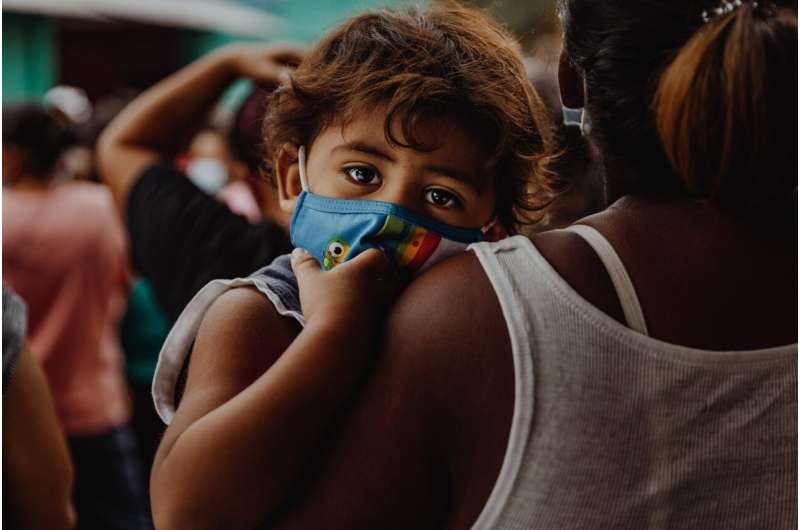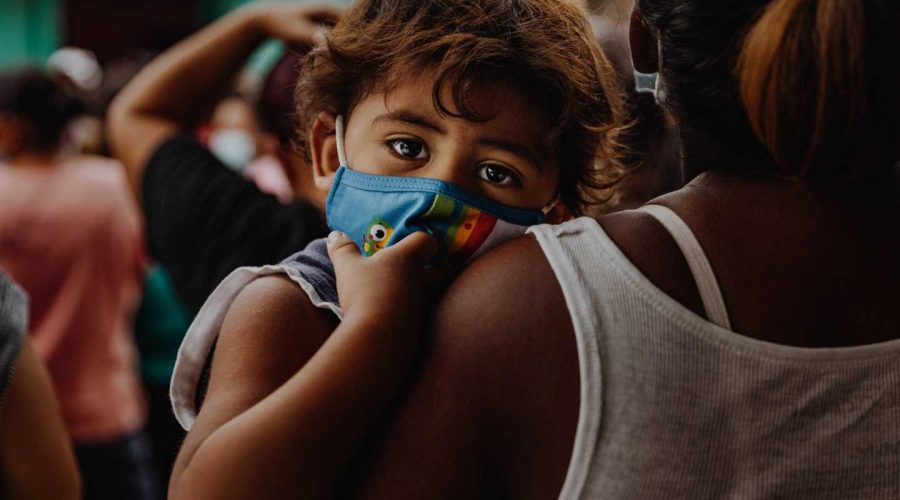COVID-19 vaccines for young children

Just one demographic group in America currently cannot receive a vaccine against COVID-19: kids under 5 years old.
Last week, the U.S. Food and Drug Administration (FDA) announced that they would postpone a meeting originally planned for Feb. 15 of an advisory committee that was going to discuss authorizing the Pfizer/BioNTech vaccine for this age group. The change means that those children would have to wait to get vaccinated until at least April, when more data is expected from clinical trials.
To untangle the regulatory procedures, science, ethics, and sociopolitical forces at play in this authorization process, Penn Today spoke with bioethicists Holly Fernandez Lynch and Steven Joffe of the Perelman School of Medicine and public health and vaccine expert Angela Shen of the Leonard Davis Institute of Health Economics and Children’s Hospital of Philadelphia. Their insights shed light on some of the regulatory and ethical issues that the under-five authorization is bringing to the fore.
“The whole pandemic vaccine response has challenged us to move as quickly as possible while still doing rigorous science,” says Joffe. “But this process for young children, with its twists and turns, has been a particularly striking case of having to build the airplane while flying it.”
Following an established process
The authorization process for this group has followed an established process for use of unapproved products under a public health emergency.
Pharmaceutical and biotechnology companies typically apply to the FDA when they have an investigational new product they want evaluated for licensure. Under a public health emergency, the FDA can grant emergency use authorization (EUA) to allow use under specific circumstances. That’s what happened with COVID-19 vaccines for adults and older children. Recently, the FDA asked Pfizer and BioNTech to submit data in support of an EUA application for younger children age 6 months through 4 years.
The companies’ application was for two doses of a three-dose series, using a dosing of 3 micrograms per shot. (In contrast, adults received 30 micrograms in each of two doses for the initial series, and 5- to 11-year-olds received 10 micrograms in each of two doses.)
In December, Pfizer shared that the immune response in two- to four-year-olds didn’t meet expected endpoints, though it did in infants and toddlers six months to two years. “It wasn’t that there was no immune response in the older group,” says Fernandez Lynch. “It just didn’t match the immune response seen in the 16- to 25-year-old age group, which was the endpoint they had set.”
Despite missing this target, a meeting of the Vaccines and Related Biological Products Advisory Committee, an independent advisory group of experts that provide guidance to the FDA, was scheduled for Feb. 15. The committee was asked to consider the safety and efficacy data reported from two doses of what the companies believe would be an eventual three-dose regimen.
“It would certainly be unusual to have considered authorization before receiving more information about the effectiveness of the third dose,” says Fernandez Lynch. “But it seems the rationale was to consider authorization so kids could start the series, getting their first two doses, in the hopes that the third dose would be protective and they wouldn’t have wasted time waiting.”
On Feb. 11, the FDA postponed the meeting, citing a notification from Pfizer that a “preliminary assessment” of clinical trial information prompted the need to wait until information about the third dose was collected before proceeding with a decision.
To Shen, however, this postponement is reasonable, given the regulations on the advisory committee process.
“The data is coming in literally hot off the presses and is being evaluated in real time as more information becomes available,” she says. “It’s like your teacher is grading each page of your test as it’s finished, as the teacher is waiting for you turn in the remaining pages of the exam. And at the same time, the federal advisory committee acts requires a 15-day minimum notice period, which can be waived in exceptional circumstances. So with Pfizer’s request to postpone the meeting, it’s most likely there is new information that can better inform the FDA’s evaluation. It can be confusing to the public.”
What the delay means for parents
For some parents, the authorization can’t come fast enough, but for others hiccups in the authorization process may augment vaccine hesitancy.
COVID-19 vaccine uptake has decreased with each age group. While more than 90% of eligible people ages 65–75 years are fully vaccinated, for example, that percentage drops to 57% for children ages 12–17 and only 24% for 5- to 11-year-olds. Penn experts predict that rate will decline further in the 6-month to 4-year-old set, regardless of when the authorization happens.
“A worry is that if you push this through too quickly or with too much uncertainty it would feed into vaccine hesitancy, but if you delay the decision after announcing the committee meeting it causes public confusion,” says Fernandez Lynch. “But already pediatric uptake is so low, I’m not very worried this particular back-and-forth will make a meaningful difference.”
Shen says, “If parents don’t have confidence in the decision-making process, that’s going to make it harder going forward, not just for this vaccine but likely with other ones that will be developed in the future.”
Doctors and parents can’t bend the rules
Physicians have some agency in whether to use vaccines “off label,” that is, for a condition or in a group other than those indicated in the FDA approval. In other words, there are circumstances in which a vaccine approved for adults could be used in children as recommended by the Center for Disease Control and Prevention (CDC) Advisory Committee (ACIP), another independent advisory committee that provides guidance on vaccine use.
Off-label use isn’t permitted for products with an EUA, but because the Pfizer vaccine now has full approval in older age groups, off-label use in younger patients is technically permissible from the FDA perspective. However, vaccine providers could compromise their access to the vaccine from the CDC if they were found to use the product outside the authorized age range, Fernandez Lynch says.
“There are some people who have argued that pediatricians and parents ought to have discretion,” Joffe says. “Like, if I’ve got a 4-year-old—can’t I give them the 10 microgram dose? But the CDC has drawn a pretty hard line about this.”
Balancing risks versus benefits
The changing landscape of the pandemic weighs into authorization decisions.
In the end, EUA authorization comes down to balancing risks versus benefits. “For a cancer drug, an endpoint may be extending life by two months,” says Shen. “But with COVID-19 and with any vaccine, part of the consideration for an EUA is the epidemiological backdrop and that the known and potential benefits outweigh the known and potential risks and that there are no other alternatives.”
Whether the pandemic is in a surge or not, and which age groups are being most affected are part of that backdrop. Omicron may have changed that calculus, with a heavier burden on pediatric populations. Now with case rates on the decline, the teeter-totter of risk and benefit changes again.
“The FDA is always evaluating risks and benefits,” says Fernandez Lynch. “If there is only a slight benefit, then any safety concerns become a significant consideration. But with the COVID-19 vaccines, at least in other age groups, safety data have looked really good, so then whether or not this is particularly efficacious becomes a gamble that people—and maybe the FDA—is more willing to take.”
Of note, Shen says, is that vaccines are held to a high standard in terms of safety and efficacy, because they’re given to healthy people who aren’t already sick.
“It’s an important to have a high and rigorous standard, as vaccines are given to healthy populations, including healthy kids as a preventive measure,” she says. “The bar for evaluating a vaccine is higher than a therapeutic drug given to sick people.”
Looking to the future
Experiences with this vaccine authorization process may shift how future clinical trials unfold.
Nine years ago, former Penn President Amy Gutmann headed a bioethics commission looking at the considerations for evaluating anthrax vaccines in children. The resulting report concluded that “many significant steps” would need to be taken before children would be involved in those vaccine trials, given that a widespread anthrax attack had not yet occurred.
That report, says Joffe, underscores that children are a protected group and must be shielded from undue risk. The fact that the COVID-19 vaccines, as well as many other drugs, are first tested in adults and gradually scaled down to be tested in younger kids, reflects this same idea, he says.
“The idea that you should be very protective of kids in research has been around a long time,” he says. And, with COVID-19 in particular, he notes that starting in adults also made sense because older adults are at a heightened risk of severe disease compared to children.
Yet as many parents wait anxiously for their infants and young kids to gain access to a vaccine, Joffe suggests that experts and federal regulators should consider a new framework for moving through age groups more rapidly. “I think it is appropriate, when possible, to begin evaluating vaccines in adults,” he says, “but I think we could explore ways to move more quickly to children.”
Of keen importance, Shen stresses, is “instilling trust in the overall system, as well as engagement and transparency in public meetings to build confidence, demand and uptake for vaccines.”
Source: Read Full Article
